French Food Dishes: Basic Overview
Common Ingredients
Common Cooking Methods
Courses
Meals
Key Taste
Eating Etiquette
Meal Presentation
Culinary Festivals
Influence and Fusion
Popular Types of French Dishes
-
Casseroles and Bakes
These dishes feature layers of flavors, often combining meats, vegetables, and creamy sauces.
They are often baked to cook through all the ingredients.
-
Stews
French stews involve slow-cooking ingredients.
Fragrant herbs and wine are often used to infuse rich, savory flavors.
-
Grilled and Barbecued Dishes
These specialties are cooked until high heat with different doneness to provide a wide range of flavors.
-
Desserts
French desserts are known for their sophistication and artistry.
They provide a sweet and indulgent conclusion to a meal, featuring a wide array of delicacies.
-
Soups
French soups are brothy creations that often incorporate a mix of ingredients, resulting in a comforting, nourishing experience.
-
Cakes and Pastries
French cakes and pastries provide delicate, flaky textures and delectable fillings.
-
Bread and Doughs
These are often featured with many savory and sweet dishes for dipping and enjoyed as a side dish.
French dishes are a wide range of specialties made using the cooking traditions and practices of France. With centuries to evolve and experiment, the cuisine is known for its fancy dishes that center around cheese and wine.
Additionally, the country is heavily influenced by Western cooking styles, serving various courses at once. In terms of ingredients, these elements vary depending on the season giving French dishes a different profile based on the time of the year.
In France, game meat, fish, and poultry products are prized items, especially in dishes that possess a sweet and sour profile. Another worth noting feature is in the presentation, as French cuisine pays extra attention to this aspect to enhance the dishes’ appeal.
To learn more about French dishes, let’s discover the dishes before getting to know about the history and features that define these specialties. Also, I’ll suggest some pairings for you with some French specialties and drinks.
30 Most Popular French Dishes with Filters
When you’re doing your reading, let me help you with the filter system to see these dishes in alphabetical order, dish types, tastes, ingredients, cooking methods, and global popularity.
Get to know all sorts of culinary styles from France with common choices, including the most popular, national, traditional, street food, and exotic dishes:
Coquilles St. Jacques
- Traditional
Coquilles St. Jacques is a French dish of scallops cooked in a creamy and thick sauce. The mixture often comes with mushrooms and onion to enhance the seafood profile of the scallops.
Served as an appetizer in France, the scallop dish is cooked using a broiler. The dish is especially loved for its rich profile coming from the thick sauce.
The main reason this scallop dish gets its name of St. Jacques is after the Saint died, some people say that his body was transferred on a ship, but it disappeared. Then, the body was found on the beach and placed in a scallop shell.
Flamiche aux Poireaux
- Traditional
Flamiche is a French specialty made using leek, coming from the beautiful Picardy. People regard it as the Picardy version of the famous quiche lorraine.
This dish features a puff pastry tart made of leek, cheese, and cream. In Picardy, locals refer to it as “flamique” instead of “flamiche.”
Aside from puff pastry, the specialty also adapts well with other dough like shortcrust or even pizza dough.
Thanks to its mild and fresh leek flavor, the dish will be a great compliment to heavy meat dishes. Flamiche can also be served as a light and quick meal or a palatable breakfast for a summer day.
Steak au Poivre
- Traditional
Steak au poivre is a dish featuring cuts of fresh steak covered with peppercorn sauce and olive oil. The term “au poivre” means “with pepper” in French, highlighting the importance of pepper flavor in the sauce.
Aside from the sauce, the cut steak is even marinated with cracked peppercorns to enhance the flavor. This fascinating dish first appeared in the Normandy bistro in the 19th century.
Baguettes
- National
- Traditional
Baguettes are a type of bread with a long shape and crispy crust. Popularly consumed in France in the 18th century, these breads come in at around 26 inches, while weighing around 8.8 ounces.
This classic French food is famous for its simple ingredients, mainly made using a dough mixture of flour with water and yeast. Once baked, these long bread need to have a soft and airy interior, making them perfect for being a sandwich or accompaniment to other dishes.
In 2022, the baguette was even inscribed on the UNESCO Intangible Cultural Heritage Lists.
Gratin Dauphinois
- Traditional
Gratin dauphinois is a dish with thinly sliced potatoes and milk as the main ingredients. It became popular after being served at the dinner of Charles-Henri, the Lieutenant of Dauphiné in south-eastern France.
The potatoes are sliced and baked with milk, creating a rich dish with a charming yellowish-brown color.
Traditional gratin dauphinois doesn’t include cheese in the mix. Different from other gratin potato dishes, the dauphinois version uses raw potatoes instead of cooked.
Fondue
- Traditional
Fondue is a dish that means “to melt” in French. Created in Switzerland, people craft the dish to it for later consumption during the winter.
This viscous delicacy consists of Swiss cheese, white wine, and garlic to create rich and tangy notes. Often, people treat it as a dipping sauce for literally any ingredients that you can come up with.
Depending on the country, fondue is adaptable with numerous cheese varieties. As for the servings, fondue requires metal forks for skewing the ingredients that are dipped in the fondue cheese.
Blanquette de Veau
- Traditional
Blanquette de veau is a French stew of veal, vegetables, and a creamy white sauce. The stew is thoroughly cooked until the veal becomes tender.
Blanquette de veau is often accompanied by rice or noodles. Notably, sour cream and plenty of herbs are used to enhance the distinctive taste and aroma.
Crêpes
- Traditional
Crêpe, or crepes, are very thin pancakes served as a sweet treat or a savory galette, depending on the filling. Originating in Brittany in the 13th century, these thin and round treats are made using a batter of flour, milk, and egg that is cooked until golden brown.
Because of its thin nature, crepes require little cooking time of only around 20 – 30 seconds on each side.
Crêpes can be served with a variety of fillings, including sweet options like fruit jams, fresh fruits (such as strawberries, bananas, and blueberries), and lemon juice with sugar.
Locals also make use of cheese, jam, or Nutella for a sweet dessert. However, versions with seafood are also available.
The best time to enjoy crêpes is at lunch or dinner, when they are easily found at crêperie stalls on the streets. French people always eat them at a religious festival named “La Chandeleur” on the 2nd of February.
Bouillabaisse
- Traditional
Bouillabaisse is a seafood stew coming from Provençal, a coastal region in France. The stew is made from fish and other seafood options like shrimp and mussels.
Created by a fisherman, bouillabaisse was made to utilize used fish scraps because they were the only thing left. Furthermore, the addition of herbs from Provençal gives the stew a unique profile.
This French specialty tastes rich, sweet, and a little bit zesty. Usually, bouillabaisse comes with a loaf of bread for dipping with the savory broth.
Confit de Canard
- Traditional
Confit de canard is a classic dish of France that is made of a whole duck.
The duck requires a complicated preservation process before being poached to provide a rich flavor as well as an incredibly tender texture.
Interestingly, every part of the duck is fully used to make a meal, with the neck often extracted for making soup.
Coming from Gascony, duck confit even has a canned version for convenience use.
Coq Au Vin
- Traditional
Coq au vin is a French entrée of a stewed chicken braised in wine, specifically Burgundy, for a tangy, saucy, and rich flavor. The dish is slow-cooked until the chicken is fully tender.
In addition to chicken and wine, this dish also has lardons, mushrooms, and herbs, which intensify the aroma.
Steak Frites
- Traditional
Steak frites is a meat creation coming from France and Belgium with the name stands for steak-and-fries. It consists of steak, potato fries, and a dipping sauce.
This meaty serving is a common item at European brasseries, even seen as a national dish of Belgium.
Quiche Lorraine
- Traditional
Quiche lorraine is a savory tart with a pastry crust filled with meat, cheese, bacon, and vegetables.
The name “quiche” came from the word “kuchen,” meaning “cake.” This dish is believed to come from Lorraine when the Germans were still ruling the place.
Fit for serving hot or cold, quiche lorraine is a great choice for breakfast brunch, or even lunch in France.
Chateaubriand (French Steak)
- Traditional
Chateaubriand is a French steak featuring cut beef tenderloin with a delicious red wine sauce. Its name stems from its creator, François-René de Chateaubriand.
Usually grilled or roasted, the steak is often enjoyed at medium-rare and in thick cuts. Aside from the meat, mushrooms are included with the sauce to improve the flavor.
Bœuf Bourguignon
- Traditional
Beef bourguignon is a type of French beef stew cooked using red wine. This classic French dish came from Burgundy, where red wine takes root from.
The beef of bœuf bourguignon is sliced into cubes so they become tender more easily. When served, the beef stew is best enjoyed with boiled or mashed potatoes.
Pot-Au-Feu
- National
- Traditional
Pot-au-feu is the national dish of France, a rich and tender beef stew with potatoes, carrots, and sometimes leek and onion. French people usually cook them on cold winter days.
The stew has many versions of the country, with hand, pork, sausage, and chicken even used. All cooked in one pot, the stew’s name is translated directly to pot on the fire.
Salade Niçoise
- Traditional
Salad niçoise is a French salad named after the city of Nice, where it originates from.
Created by Auguste Escoffier, the salad is a mixture of tomatoes, eggs, tuna fish, and beans. Everything is mixed then finished with an olive oil dressing.
Interestingly, the traditional version of salade niçoise doesn’t come with cooked vegetables, while the modern adaptation requires green beans and potatoes.
Soupe à L’oignon
- Traditional
Soupe à l’oignon is a classic French onion soup created in the romantic city of Paris and dates back to the mid-19th century.
The French soup is made by cooking onion in stock until the mixture is mushed up before serving it with melted cheese and bread on top. As a starter, the soup is valued for its comfort.
Ratatouille Niçoise
- Traditional
Ratatouille Niçoise, or ratatouille, is a French dish where vegetables of tomatoes, eggplant, bell pepper, herbs, and zucchini are stirred together.
Invented in the 18th century by poor French farmers, they collected all of the ripe peasants on the field and cooked them.
The modern adaptation of this stew requires a base of tomatoes layered with the remaining vegetables.
Cassoulet
- National
- Traditional
Cassoulet is a famous French bean stew that originated in Castelnaudary. It is a rich, warm, and hearty dish with pork and white beans as the main ingredient.
During wartime, the townspeople gathered every available ingredient and slow-cooked them in an earthenware pot called cassole.
Over time, it became a classic dish of French cuisine and expanded its popularity globally. When served, cassoulet comes with breadcrumbs on top for a touch of crustiness.
Omelette
- Traditional
Omelette is among the most common fried egg dishes in France. Omelette is cooked differently across countries, with the French version first made in the 16th century, with the name derived from ‘amelette’ in French.
They have a very smooth surface along with a fragrant profile thanks to the butter. The inside is fluffy, while the outside is soft before they are rolled up for serving.
Alternatively, France even has omelette de la mère Poulard, which features no fillings but garnished heavily with herbs instead.
Escargot (Cooked Snails)
- Exotic
- Traditional
Escargot is a snail specialty in France with the name derived from the word “snail” in French. It is simply a cooked snail dish cooked with wine, garlic butter and served with a baguette as an appetizer.
Despite being made using snails, escargot has an earthiness that reminds you of mushrooms and, of course, a buttery and garlicky taste. Originally considered a food for the poor, escargot was recently considered a delicacy.
Cuisses de Grenouille
- Exotic
- Traditional
Cuisses de grenouille are dishes made using frog legs that come from the Dombes region. These legs are a part of the national diet in the country.
On average, 4000 tons of frogs are eaten by the French every year. These frog legs are often smothered with garlic and butter and then fried or included in a soup.
Steak Tartare
- Exotic
- Traditional
Steak tartare is a French culinary creation that is completely made of raw meat and egg yolks. The name “tartare” is sometimes thought to derive from the Tatar people, with a myth suggesting they tenderized meat under their saddles.
The dish allows locals to enjoy the best flavor of beef with a creamy profile of egg yolk.
Tarte Tatin
- Traditional
Tarte tatin is a sweet dessert that is a tart named after the creators, Stéphanie and Caroline Tatin. They were first made to serve in their hotel before becoming popular in the entire country.
This tart is made of a puff pastry with caramelized apple and sugar. Its sweet taste is fantastic, thanks to the fruits and caramelized profile.
Paris-Brest
- Traditional
The Paris-Brest is a French dessert consisting of choux pastry filled with praline-flavored cream. Garnished with flaked almonds, it was created in 1910 by patissier Louis Durand to commemorate the Paris-Brest-Paris bicycle race.
Interestingly, the circular shape of the pastry represents a bicycle wheel. The dessert quickly became popular among cyclists for its energy-boosting properties and has since become a staple in French patisseries nationwide.
Chocolate Soufflé
- Traditional
Chocolate soufflés are a French dessert made from a rich chocolate base folded into stiffly beaten egg whites. The sweet treat offers a light, airy, and intensely chocolatey profile.
These soufflé are best baked until they puff up and served immediately to savor its delicate rise. When you get to the filling, it’s a thick and sweet sauce mixture that delicately flows out.
Brioche (Roll Bread)
- Traditional
Brioche is a sweet and buttery kind of bread popularized in France. The bread is rich and tender thanks to its high content of eggs and butter, giving it a soft, light texture and a flaky crust.
Often eaten for breakfast or as a snack, brioche can be served plain, filled with fruit or chocolate chips, or used as a base for desserts. It comes in various forms, including the classic “Brioche à tête” and “Brioche de Nanterre.”
The dough of brioche requires a double rising process, first at room temperature and then in the refrigerator, which enhances its flavor and texture.
Beignet
- Street Food
- Traditional
Beignets are a type of French fritter or deep-fried pastry, often made from choux pastry or yeast dough. These sweet treats vary in shape, the flour used, and fillings, with over 20 different versions in France alone.
This dessert has been popularized worldwide, with variations including fillings of fruit, jam, or chocolate chips. Beignets are a favorite pick for breakfast thanks to their light, airy texture and are often served hot and fresh.
Macaron
- Traditional
Macarons are a sweet meringue-based confection made with egg white, icing sugar, granulated sugar, almond meal, and often food coloring.
The modern macaron, as known today with its sandwich cookie form filled with sweet fillings, became popular in the 1930s.
Originating from France, the Parisian-style macaron is known for its smooth top, ruffled circumference, and a variety of flavors ranging from traditional sweets like raspberry or chocolate to savory options. The macaron is typically filled with ganache, buttercream, or jam.
What Is the History of French Dishes?
French dishes have evolved significantly over the centuries. Originating in France, it was first documented in the 14th century by Guillaume Tirel, also known as Taillevent.
By the 17th century, chefs like François Pierre La Varenne and Marie-Antoine Carême began shaping a distinct French culinary identity, moving away from foreign influences.
Central to French cuisine are cheese and wine, varying regionally and protected by appellation laws. The 20th century saw culinary tourism, and the Guide Michelin introduced the broader public to both elite urban and rustic countryside cooking, making regional dishes popular nationwide.
In 2010, UNESCO recognized French gastronomy as an “intangible cultural heritage,” highlighting its global impact on cooking and culinary education. French cuisine has developed from heavily seasoned medieval dishes to lighter, more refined flavors that define French dishes.
What Features Define French Dishes?
French cuisine is characterized by its diversity, complexity, and elegance, reflecting France’s rich history and cultural heritage. Key features include:
Don’t miss out on the chance to take your French meal to the next level by accompanying them with the right choice of drinks.
What French Dishes to Pair with Beverages?
There’s no better way to savor these specialties than to enjoy them with the fine refreshments of France, which perfectly balance the taste profiles:
If you find these French dishes helpful, please give them a heartfelt share so they can reach more people struggling to find some French dishes to try. If you have other French specialties, share them with me and others in the comment section.



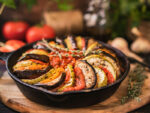



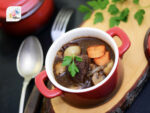


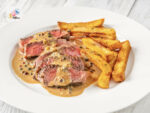
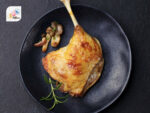


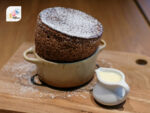
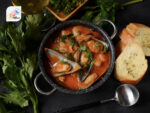
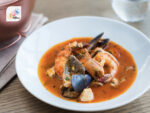
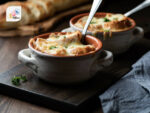





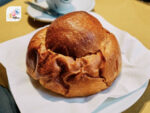

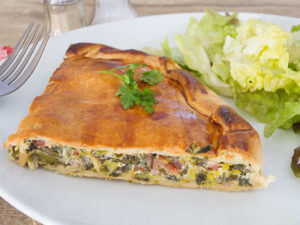
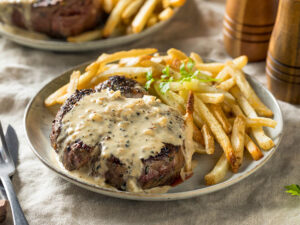
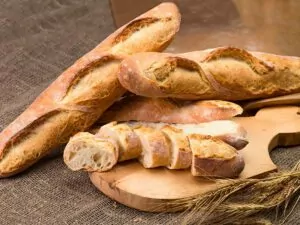
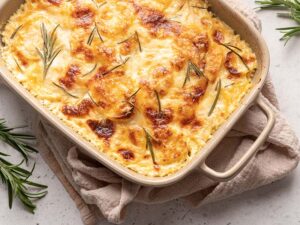
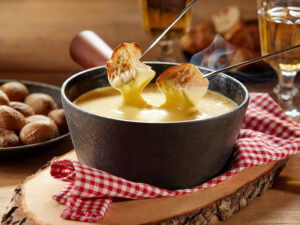
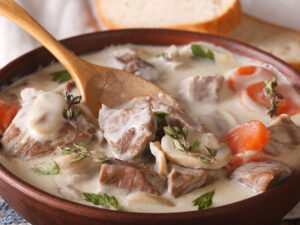
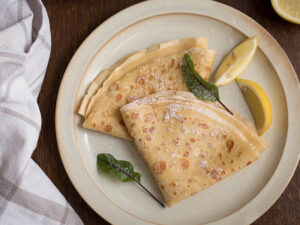
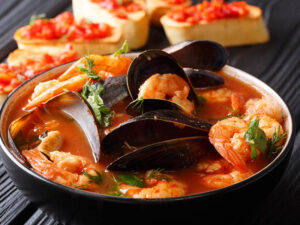
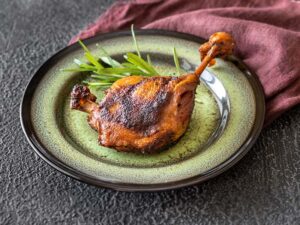
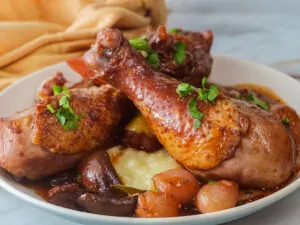

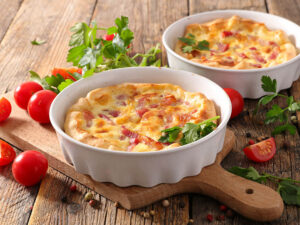
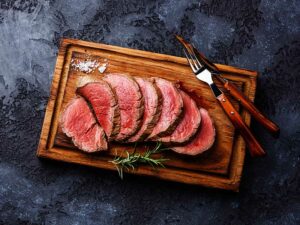
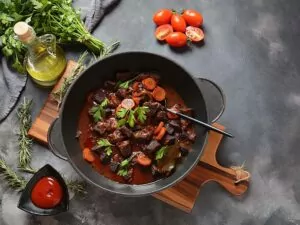
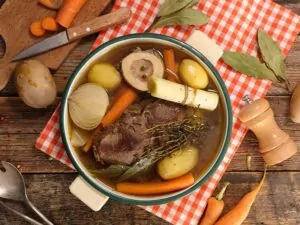
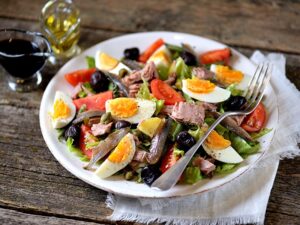
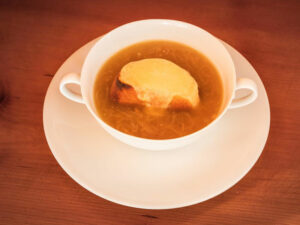
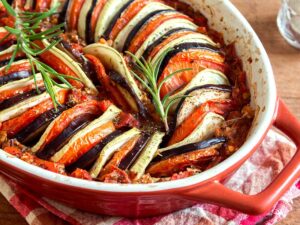
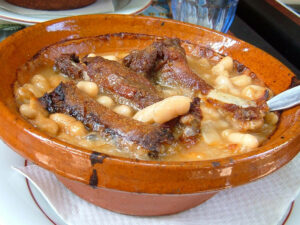
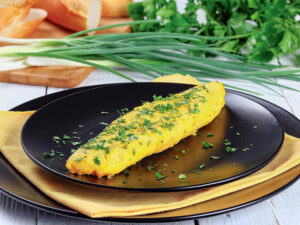
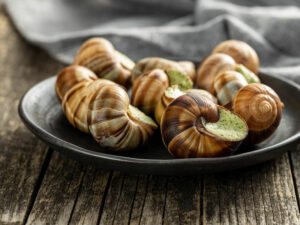
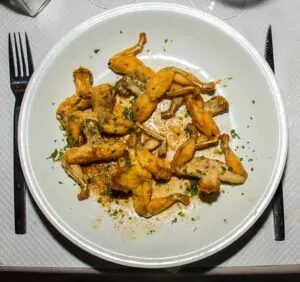
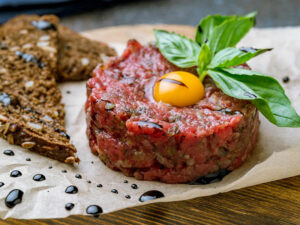
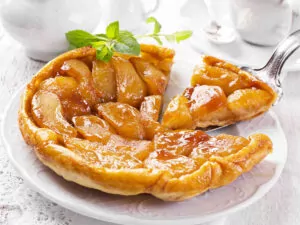
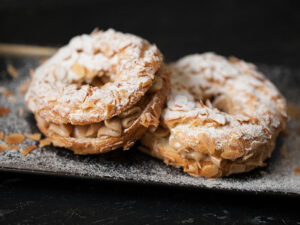
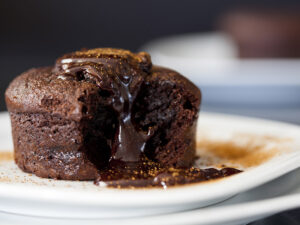
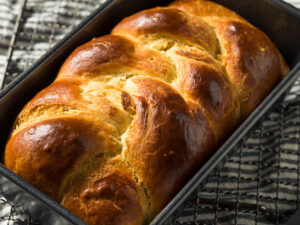



Jamie Scott
Editor in Chief, Senior Content Writer
Expertise
Home Cooking, Meal Planning, Recipe Development, Baking and Pastry, Food Editor, Cooking-video Maker, Western Food Evaluation Expert
Education
Le Cordon Bleu College of Culinary Arts
Local Community College, New York, NY
Jamie Scott is a skilled culinary expert and content creator specializing in Western cuisine. With over 15 years in the culinary field and formal training from Le Cordon Bleu, Paris, Jamie deeply understands how to blend nutrition with delicious flavors. His passion for cooking matches his commitment to making healthy eating accessible and enjoyable.
On Fifteen.net, Jamie brings a fresh perspective to classic dishes and beverages, offering readers insightful recipes, cooking tips, and a fresh view on meal planning that emphasizes taste, health, and simplicity.